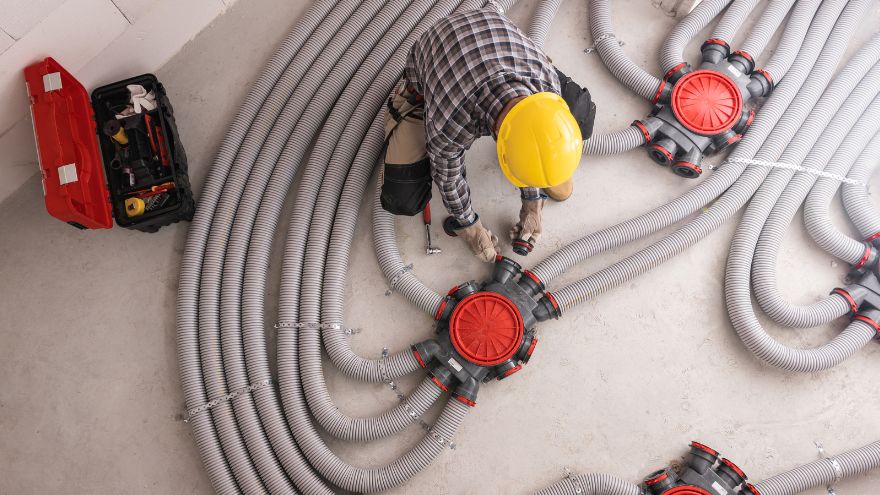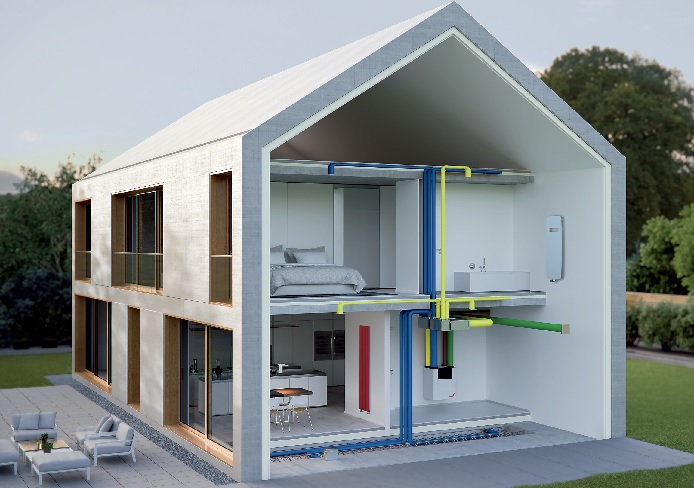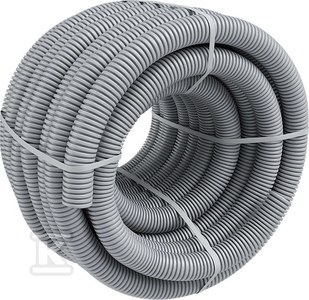Recuperation is becoming more and more popular, not only in newly constructed buildings, but also in those that already exist. It's worth learning more about this system!

How to prepare a room for a heat recovery unit?
When preparing a room for a heat recovery unit , you should take into account the assumptions of the ventilation installation design, but also follow the guidelines of the device manufacturer. Taking these factors into account, we can be sure that the place where the recuperator is to be located will be ideally suited in every respect. Regardless of the equipment we choose, there are a few general rules that must be followed.
 First of all, it is important to place the recuperator in a dry and covered room with a positive temperature . A utility room, for example a boiler room, is best suited for this purpose. It is important that it is away from the so-called quiet rooms, such as a bedroom. Recuperation cannot be allowed to take place at sub-zero temperatures, as such conditions may damage the device. Of course, let's check what the permissible temperatures are for a given recuperator, because they - depending on the model - may differ. Another important issue relates to ensuring adequate space at the front of the device, necessary to freely and without any obstacles perform activities such as replacing the air filter and removing the heat exchanger from the inside of the housing. However, during operation there may be other tasks to which full access must be provided. What else should you remember? It is important that the substrate for the recuperator is resistant to moisture.
First of all, it is important to place the recuperator in a dry and covered room with a positive temperature . A utility room, for example a boiler room, is best suited for this purpose. It is important that it is away from the so-called quiet rooms, such as a bedroom. Recuperation cannot be allowed to take place at sub-zero temperatures, as such conditions may damage the device. Of course, let's check what the permissible temperatures are for a given recuperator, because they - depending on the model - may differ. Another important issue relates to ensuring adequate space at the front of the device, necessary to freely and without any obstacles perform activities such as replacing the air filter and removing the heat exchanger from the inside of the housing. However, during operation there may be other tasks to which full access must be provided. What else should you remember? It is important that the substrate for the recuperator is resistant to moisture.
Check the necessary products for heat recovery at the Onninen wholesaler
Can heat recovery be installed in an existing building?
 Heat recovery is most often installed in new buildings, alongside other innovative solutions. This does not mean, however, that this system cannot be used in old buildings. You can, but of course it involves more advanced work and sometimes higher costs. However, it should be remembered that heat recovery only makes sense if the walls and windows of the building are tight. Therefore, before we decide to change the ventilation, we should check it and then commission a system design. On this basis, the location of the ventilation ducts and the installation of the intake and exhaust vents are determined. In this way, the designer gains a clear picture of whether the installation of heat recovery will involve a general renovation, or whether it is possible to use (at least to some extent) the existing gravity ventilation channels. This, of course, also makes it easier to calculate the final costs of this operation, because in the case of a general renovation they will be much higher. We must also remember that when installing heat recovery in an existing building, unexpected problems and complications may occur, delaying the work and increasing costs.
Heat recovery is most often installed in new buildings, alongside other innovative solutions. This does not mean, however, that this system cannot be used in old buildings. You can, but of course it involves more advanced work and sometimes higher costs. However, it should be remembered that heat recovery only makes sense if the walls and windows of the building are tight. Therefore, before we decide to change the ventilation, we should check it and then commission a system design. On this basis, the location of the ventilation ducts and the installation of the intake and exhaust vents are determined. In this way, the designer gains a clear picture of whether the installation of heat recovery will involve a general renovation, or whether it is possible to use (at least to some extent) the existing gravity ventilation channels. This, of course, also makes it easier to calculate the final costs of this operation, because in the case of a general renovation they will be much higher. We must also remember that when installing heat recovery in an existing building, unexpected problems and complications may occur, delaying the work and increasing costs.
Recuperation in service facilities - why is it worth it?
As we can see, heat recovery in single-family homes is definitely an option worth considering. The situation is no different in service facilities, where the number of places equipped with this system increases every year. It is no accident that these are places where many different people stay every day, so effective ventilation is worth its weight in gold. It can be installed anywhere - office and service facilities, educational institutions (schools, kindergartens, etc.), medical offices, guesthouses, hotels, etc. It ensures perfect conditions in every room, while limiting the number of viruses and bacteria, which is undoubtedly of key importance. Effective air exchange guarantees health and well-being.
Recuperation is a great solution both for single-family houses and public buildings. Everywhere it provides a perfect atmosphere to stay. It is worth considering this investment, especially since not only owners of new buildings, but also existing ones, may decide to opt for heat recovery.
Check the necessary products for heat recovery at the Onninen wholesaler